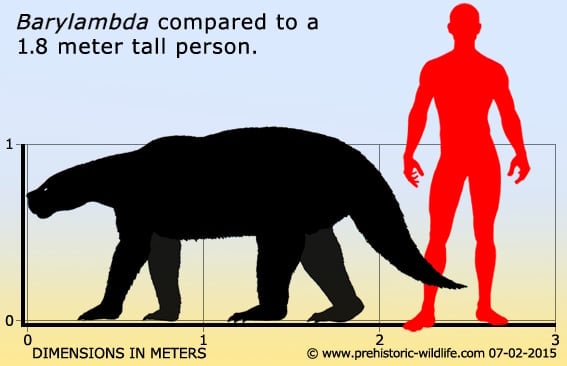In Depth
The holotype fossils of Barylambda were originally assigned to another genus of pantodont called Titanoides until later study revealed them to be different enough to warrant the creation of a new genus. As a pantodont, Barylambda was a member of the first main group of mammals to evolve after the mass extinction of the dinosaurs just a few million years earlier.
Like with its relatives, Barylambda was quadrupedal and heavily built. One feature that it has though is an especially well developed tail that may have been quite muscular in life. Popular reconstructions have thus shown Barylambda to use this tail as a ‘third leg’ for use in conjunction with the rear two legs to form tripod. This then enabled Barylambda to reach up to gain access to higher growing vegetation that was beyond the reach of other contemporize herbivores. Despite this possible specialised adaptation however, Barylambda seemed to have fairly standard grinding teeth that were not especially suited to any one type of plant, something itself that suggests that Barylambda was more of a generalist browser.
Barylambda seems to have been quite successful for an early pantodont, though eventually it seems to have been replaced in its ecosystem by other pantodonts such as Coryphodon.
Further Reading
– Barylambda churchilli, a new species of Pantolambdidae (Mammalia, Pantodonta) from the Late Paleocene of Western North America. Contributions from the Museum of Paleontology, Museum of Paleontology. – University of Michigan – P. D. Gingerich & C. G. Childress Jr. – 1983.










